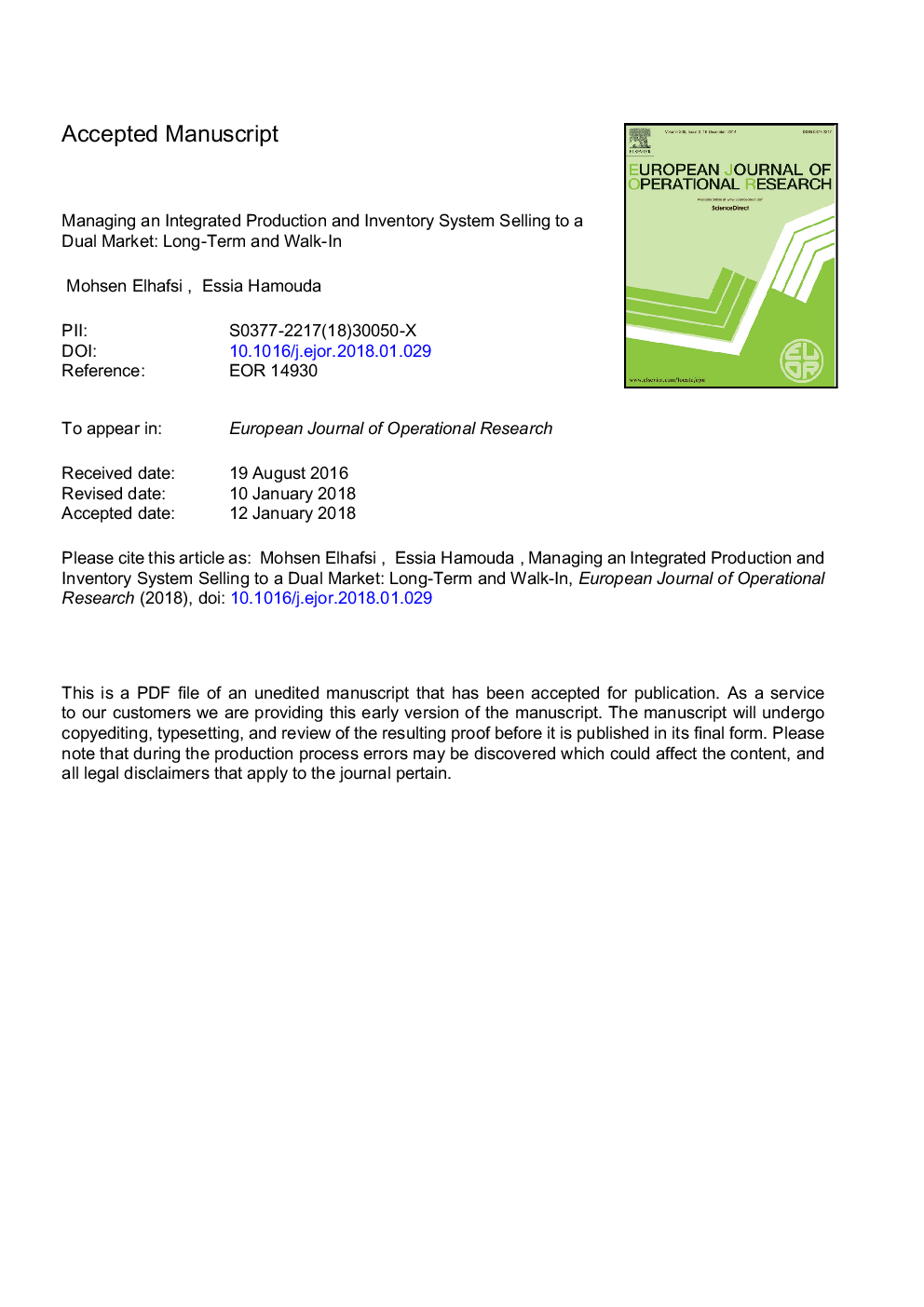| Article ID | Journal | Published Year | Pages | File Type |
|---|---|---|---|---|
| 6894893 | European Journal of Operational Research | 2018 | 36 Pages |
Abstract
We consider a manufacturer selling a product through two markets: long-term and walk-in. The walk-in demand is dynamically priced in response to market conditions while the long-term demand is priced ahead of time according to contractual agreements. Demand for the product fluctuates due to varying state-of-the-world conditions evolving according to a finite-state Markov chain. Units are produced ahead of demand, with exponentially distributed production times. If orders cannot be fulfilled immediately, they are either backordered, in the case of the long-term demand, or lost, in the case of the walk-in demand. The objective of the manufacturer is to coordinate pricing, production scheduling and inventory allocation, in order to maximize the expected profit. Due to the different characteristics of the two markets, the long-term market is quoted a single price while the walk-in market is dynamically priced. We formulate the problem as a Markov decision process and characterize the structure of the optimal policy. We show that the optimal policy, in addition to specifying the optimal walk-in market sales price, is characterized by two state-dependent thresholds: one specifies how to allocate inventory among the two markets and the second specifies how to schedule production. We also study the special cases of static and state-of-the-world dependent walk-in market pricing strategies as well as the case of a spot market where the price is exogenously set. Finally, we conduct numerical experiments to show how the optimal policy is affected by system parameter changes.
Related Topics
Physical Sciences and Engineering
Computer Science
Computer Science (General)
Authors
Mohsen Elhafsi, Essia Hamouda,
